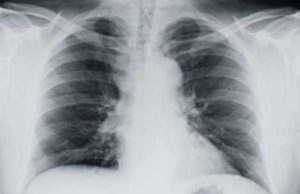
Mesothelioma Symptoms: Difficulty Breathing
Difficulty breathing is a common mesothelioma symptom. Mesothelioma sufferers may describe different sensations that may be classified under the definition of difficulty breathing. For some mesothelioma patients, mild exercise, such as walking upstairs, can trigger a sense of difficulty breathing. Other mesothelioma sufferers, with more advanced symptoms, may have difficulty breathing but not having that sensation of shortness of breath.
Mesothelioma symptom relief is the primary focus of care for mesothelioma patients who experience proliferation to their vital organs. Palliative treatment or pain management will vary with each mesothelioma patient. The mesothelioma sufferer’s pre-existing conditions are vital in determining the best palliative care plan. However, there are a number of several similarities with regards to mesothelioma treatments and symptomatic relief packages for pleural mesothelioma patients, as well as sufferers of peritoneal and pericardial mesothelioma.
The majority of mesothelioma cancer patients experience difficulty breathing. This mesothelioma symptom is more common in patients with stage III or stage IV (more advanced stages) mesothelioma patients. Studies have indicated that approximately 70% of mesothelioma cancer patients experience difficulty breathing. Diseases such as pericardial mesothelioma cancer and pericardial mesothelioma cancer will experience shortness of breath and painful breathing during the advanced, but not terminal, stages.
Difficulty breathing is a scary symptom for all mesothelioma patients and their families. When the patient struggles to breathe, the fear of death becomes more real. Mesothelioma symptom relief for difficulty breathing will include emotional care as well as palliative symptom relief, such as pleural effusion surgery or relaxation techniques. Although these mesothelioma treatment options will not shield the organs from the proliferation of cancer, palliative care will mitigate the difficulty breathing. These lifestyle changes must be applied to mesothelioma patients to control the disease’s ability to impede proper breathing.
Mesothelioma treatment options for physical pain from difficulty breathing can be provided by advising, learning and providing for the patient. These palliative treatment options will be suggested to the mesothelioma patient to teach the individual how to properly position their body for effective air flow. Moreover, mesothelioma patients who experience difficulty breathing should rest in rooms with fresh streams of air flowing in from windows or fans.
How to Mitigate the Problems Associated with Difficulty Breathing:
Mesothelioma patients with difficulty breathing should also be taught hyperventilation techniques so the individual can evaluate and conduct self-monitoring tests to ensure proper breathing. Mesothelioma patients with difficulty breathing need to learn how to properly purse their lips stay claim and relax their neck, back, arms and shoulders at the first sign of breathing complications. In addition to this, the patient must then “flop” into relaxation to gain control over their breathing complications. Until these techniques are mastered, learning how to exhale slowly is a vital step in mesothelioma breathing management.
Mesothelioma patients with trouble breathing must realize that stress breeds stress. If a mesothelioma treatment is afraid that they are going to fall victim to mesothelioma cancer, their body will naturally respond by producing more stress, which will further complicate the breathing process. These are common physical and emotional responses to mesothelioma cancer.
Oxygen may be prescribed for mesothelioma symptom relief; however, medical professionals may report that some mesothelioma patients become unnecessarily dependent on oxygen. For other mesothelioma sufferers, oxygen is the foundation of their mesothelioma treatment. Moreover, oxygen therapy requires a review of whether continuous or intermittent therapy provides the most effective relief for their mesothelioma cancer. Mesothelioma treatments that utilize oxygen therapy may distribute the oxygen through oxygen tanks or oxygen concentrators.
Difficulty breathing from mesothelioma cancer may be treated through the administration of certain drugs. Anxiolytic drugs, such as Lorazepam, Midazolam, Diazepam and Methotrimeprazine may be prescribed for difficulty breathing from mesothelioma cancer. Benzodiazepines are referred to as anxiolytic drugs—these drugs have sedative effects and use muscle relaxation as pain treatment for difficulty breathing.
Although there are a number of mesothelioma treatment options for difficulty breathing, mesothelioma symptom relief for troubled breathing always requires educating the patient and his/her family. Mesothelioma treatment options for pain will also require perpetual monitoring and subsequent adaptation to administered mesothelioma pain treatment plans to satisfy their medical and emotional needs. Listening to the mesothelioma patient’s perception of pain is fundamental in determining the pain management treatment option for mesothelioma symptoms. Even though a mesothelioma patient will be in pain, palliative care and mesothelioma symptom relief from knowledgeable medical professionals will bolster the patient’s quality of life.
Mesothelioma Cancer: A Quick Review
Malignant mesothelioma is a rare cancer that affects the mesothelial cells located in the serous membranes. The most common form of mesothelioma cancer, known as pleural mesothelioma, damages the lining of the lungs. Roughly 3,000 mesothelioma cases are diagnosed each year.
Malignant mesothelioma affects the membranes of several large cavities in the body. These cavities, known as serous cavities, protect several vital organs in the body, including the heart and lungs.
The membranes surrounding these cavities defend some of the body’s organs from abrasions that that arise from everyday movement, such as breathing. The serous membranes originate from mesothelial cells, which form to create the mesothelium—protective tissues of the serous membranes.
Malignant Mesothelioma cancer is categorized in the following forms:
Pericardial Mesothelioma: Originates in the lining of tissue surrounding the heart (pericardium).
Peritoneal Mesothelioma: Originates in the membrane surrounding the abdomen (peritoneum). This is a rare cancer that may also disturb the testicles, more specifically the tissues surrounding the scrotum.
Pleural Mesothelioma: The most common form of mesothelioma cancer which disrupts the lining of the lung cavity.
All mesothelioma cancers derive from acute tumors and then spreads to surrounding organs and tissue. The bulk of mesothelioma cases stem from asbestos exposure.
When detected, mesothelioma cancer is often found in its latter stages. This delayed finding makes prognosis exceptionally pessimistic. The average survival time of mesothelioma cancer is only 1 to 2 years. This timeframe; however, fluctuates on the type of mesothelioma cancer and the general health of the patient.
Mesothelioma cancer is nearly impossible to accurately diagnose because the symptoms are inconspicuous. Malignant mesothelioma cancer sufferers do not observe mesothelioma symptoms for 10-15 years following infection. Furthermore, complications from a delayed diagnosis originate from the cellular makeup of mesothelioma cancer—mesothelioma is nearly impossible to differentiate from basic cancers.






























